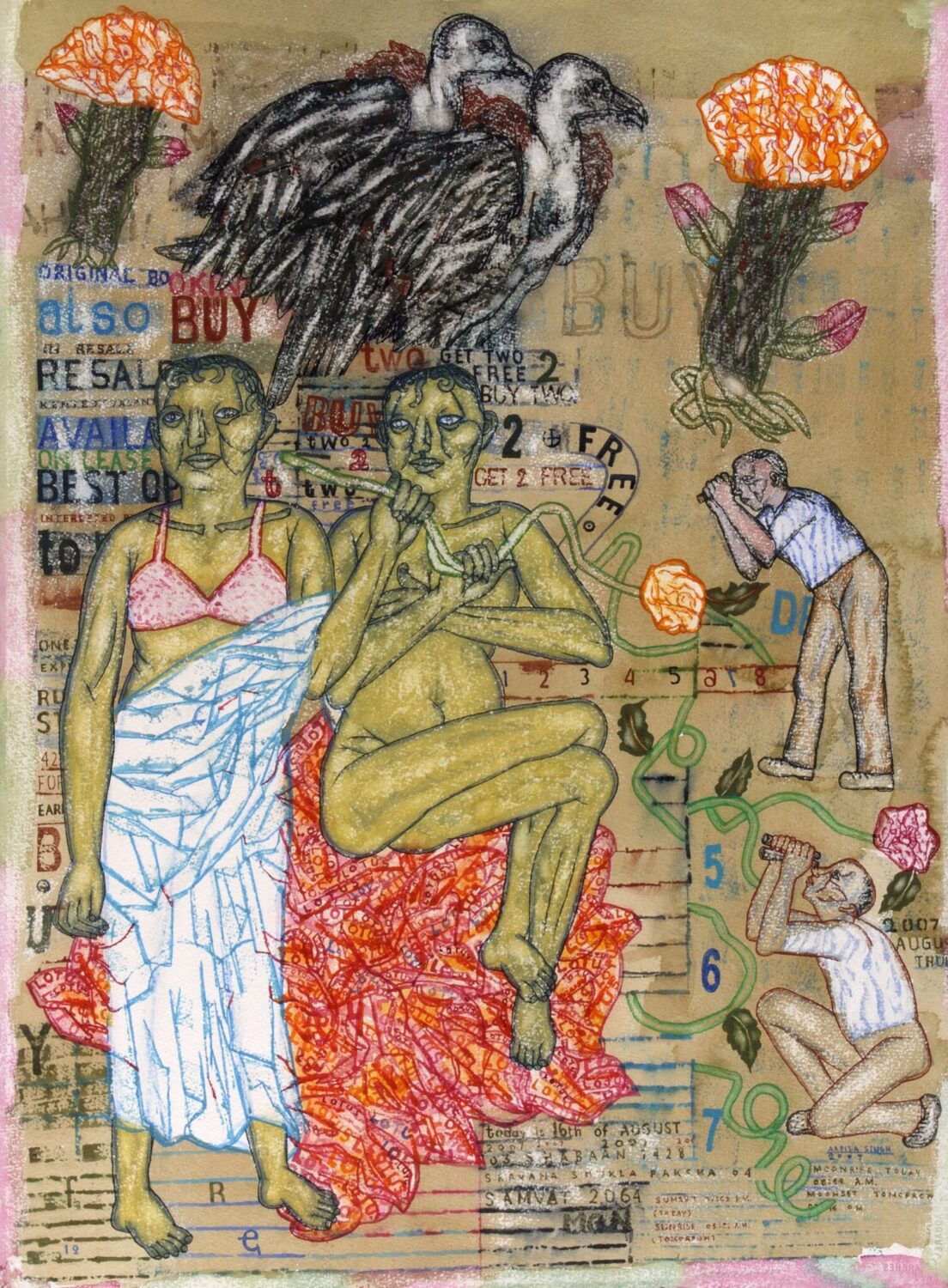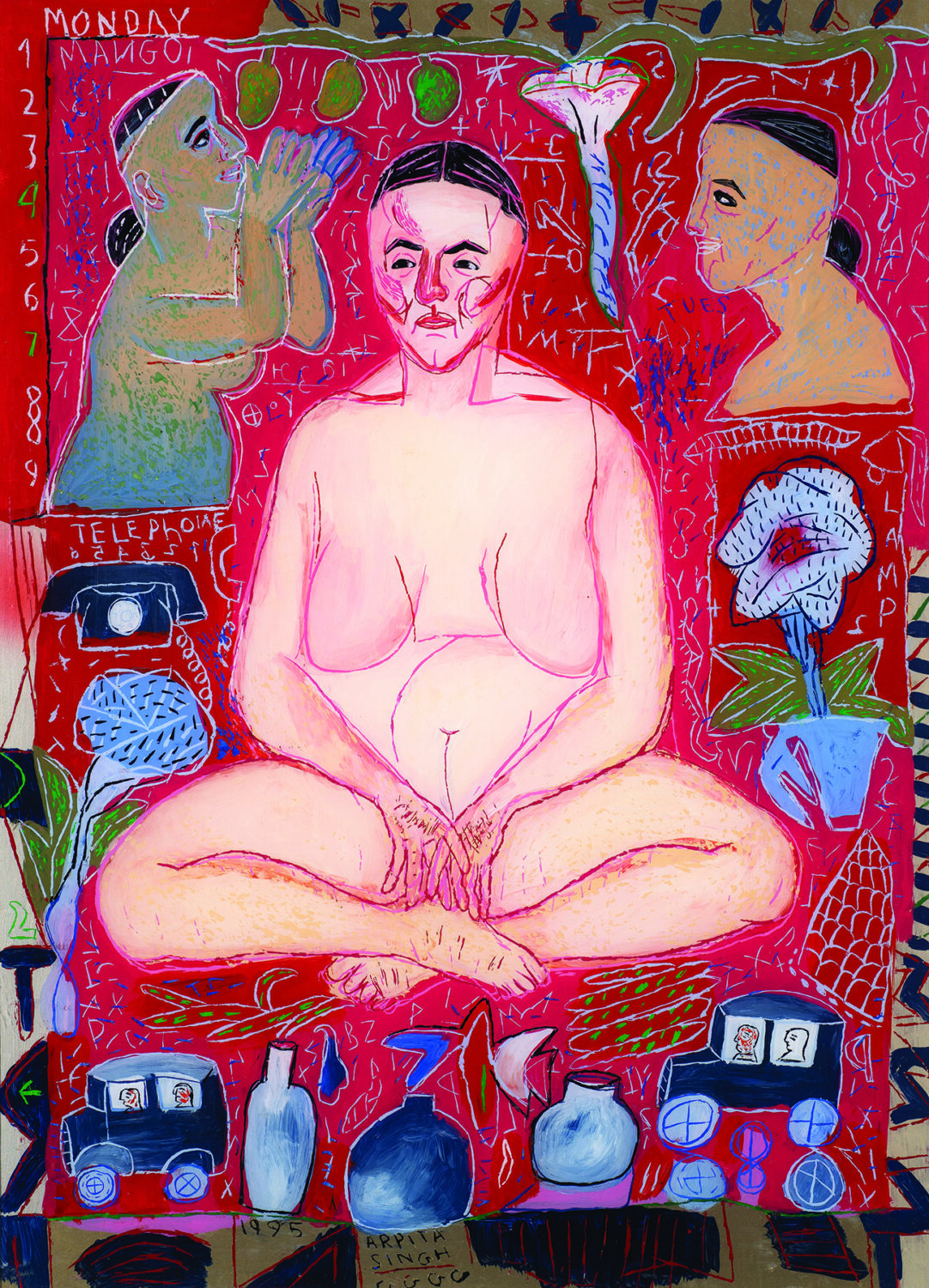Inside Arpita Singh’s Universe: “There Is a Law, but That Law Is According to Me”
By Keshav AnandOpening next month—and on view from 20 March to 27 July 2025—London’s Serpentine will host the first major UK exhibition of one of India’s most prolific contemporary painters. Elaborate and richly coloured, Arpita Singh’s works are labyrinths of memory, myth, and observation. Ahead of her new presentation, Something Curated explores the life and work of this pioneer of narrative figuration.
Born in 1937 in Baranagar, Bengal Presidency—West Bengal, following independence from the British—Singh didn’t grow up with ambitions of becoming an artist. “I didn’t know that there was an art school or that there was a field called art,” she recalls. “My principal, Kamala Sengupta, sent me to art school.” It was there, under the tutelage of instrumental painters like Sailoz Mookherjea and Biren De, that Singh forged her path into the field. The influence of early artistic encounters—from Kangra miniatures she discovered in magazines to the works of European masters like da Vinci and Raphael—continues to surface in her compositions, unanchored by conventional perspective.

The upcoming Serpentine exhibition will bring together works from across Singh’s six-decade spanning career, showcasing her distinctive approach to colour and space. Often, her paintings are populated by fragmented, overlapping forms, evoking the layered nature of memory itself. “I think everybody has such a store [of memory], and I’m very fond of opening it and bringing things out,” she explains. “Like, say, something happened to my grandmother, and she passed her trauma or joy to me. I remember these emotions, but I don’t know the incident.”
The figures of mothers and daughters frequently recur in the artist’s work. She mines personal and collective histories, with a particular focus on the lives of women, navigating domestic and public space. Some of Singh’s paintings are very clearly titled, while others feel more open ended, their subjects and meanings left to interpretation. “I have some works titled Woman with a Girl Child that could stand for my relationship with my daughter,” she says. “But sometimes I just painted it—it doesn’t have any agenda.” Singh’s works—powerfully feminist in varying degrees of overtness—at times juxtapose tropes of femininity with symbols of violence and authority. The pistol-wielding female figure in Devi Pistol Wali (1990) underscores this duality.

Language, too, is a vital part of Singh’s compositions. Letters and words emerge spontaneously through her intuitive process. “I used to apply colours with a knife, and the edge of the knife would make a mark. If it was horizontal with a vertical line, it became a T. Letters appeared like that, accidentally,” she explains. Over time, these unplanned marks evolved into a distinct visual vernacular, bolstered by personal and cultural references.
Existing in a suspension—feeling at times like you’re peering into a just-shaken snow globe or aquarium—floating words, symbols, objects and figures congregate. “In that space of the canvas, there is no such gravity,” the artist asserts. “So, you can place your objects anywhere. There is a law, but that law is according to me. I control the law.” This element of controlled chaos, where phantasmagorical characters coexist with humans and familiar objects, lends her work an almost surreal quality—though she resists such categorisation. “I don’t think it’s dreamlike because for me it’s very real,” she says. “I’m both creating the problem and solving it.”

Committed to her medium, Singh’s focus on painting remains steadfast. “Painting is always fascinating,” she reflects. “I saw a very small child make a painting with red, and she was painting the red colour again and again. I said, “Why are you doing it again and again?” She said, “It’s not red enough.” It’s like that for me too.” As Singh’s paintings make their way to London, the Serpentine exhibition offers a rare opportunity for an international audience to engage with her singular world—one that was ahead of its time in many ways. “Somebody once asked me, “Why are you painting like this? Nobody understands.” So I said, “Maybe after 200 years, somebody will come who will understand. I’m painting only for them.””
Arpita Singh: Remembering is on view at Serpentine North from 20 March – 27 July 2025.
Feature image: Arpita Singh, My Lollipop City: Gemini Rising, 2005. Vadehra Art Gallery © Arpita Singh